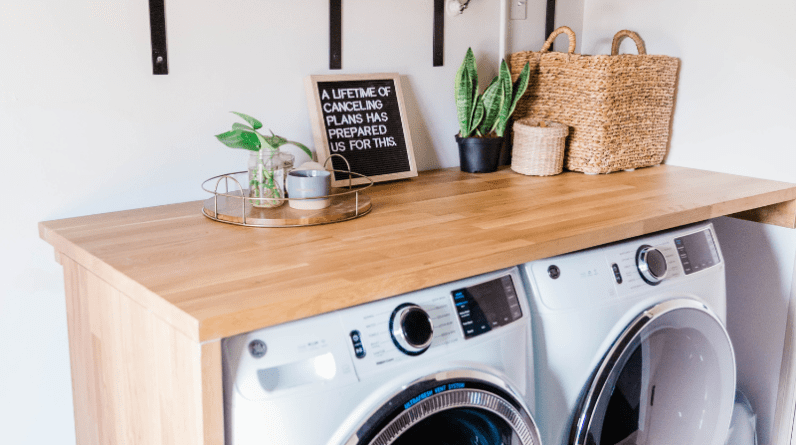
Hey there, folks! If you’re one of the many creative homeowners who’ve turned their garages into something more than just a place to park your car, you’re in for a treat today. We’re diving into the essential aspects of insulating and ventilating your converted garage, making it cozy, functional, and a real addition to your living space. So, buckle up and let’s get this show on the road!
The Insulation Breakdown
Insulation, my friends, is the secret sauce for transforming your chilly, drafty garage into a comfortable haven all year round. Now, there are different types of insulation materials out there, and each comes with its own set of perks. Let’s take a gander at some popular choices:
- Fiberglass Batt Insulation: A classic option, easy to install, and relatively affordable. These fluffy batts will snugly fit between the studs, filling up those nooks and crannies like nobody’s business.
- Spray Foam Insulation: For the ultimate seal, spray foam insulation is the way to go. It expands and fills every crevice, providing an airtight barrier against the elements. But hey, it can cost a pretty penny, so keep that in mind.
- Rigid Foam Insulation: If you’re tight on space, rigid foam boards are your friends. They’re thin but mighty, and they do wonders in preventing heat transfer.
Remember, my fellow DIY enthusiasts, proper insulation not only keeps you warm in winter but also wards off the sweltering heat in summer. It’s all about creating that sweet balance.
Ventilation Vibes
Now, let’s talk about ventilation—a topic close to my heart. A well-ventilated garage is like a breath of fresh air, literally! Nobody wants a stuffy, musty space to hang out in, right? So, let’s explore some ventilation avenues:
- Windows: The good old windows come to the rescue! They not only let natural light flood your converted garage but also allow air to circulate. Open them up on pleasant days, and let nature work its magic.
- Exhaust Fans: Say hello to the heavy lifters of ventilation! Exhaust fans are excellent at expelling hot air and odors, creating a pleasant atmosphere inside. Consider installing them near workstations or areas prone to heat buildup.
- Vents and Louvers: These little wonders promote air circulation and keep your garage fresh as a daisy. They come in various shapes and sizes, fitting seamlessly into your garage’s design.
But hey, don’t forget about the age-old mantra—safety first! Ensure your ventilation system allows for proper air exchange without compromising security.
The Harmony of Insulation and Ventilation
Now, my friends, here’s the real nugget of wisdom: insulation and ventilation go hand in hand. As you beef up your insulation game, remember to strike a balance with proper ventilation. Why? Well, because insulation creates a sealed environment, and without ventilation, it can lead to excess moisture and air quality issues. Yikes!
To maintain the perfect synergy, consider these tips:
- Eave Vents: Allow cool air to enter from the eaves while hot air escapes through exhaust vents. This natural airflow is like a ballet of temperature control.
- Attic Vents: If your garage has an attic space, install vents up there too! It prevents heat from building up and keeps the temperature inside at a comfortable level.
- Check for Leaks: A well-insulated garage can still be sabotaged by sneaky air leaks. So, be vigilant and plug any holes you find.
And there you have it, my dear readers—a comprehensive guide to insulating and ventilating your converted garage. With the right combination of insulation materials and ventilation strategies, you’ll create a space that’s both cozy and inviting, regardless of the season. Now, go forth and make your garage conversion the envy of the neighborhood!
Frequently Asked Questions (FAQ) – Insulating and Ventilating Your Converted Garage
Q1: Why do I need to insulate my converted garage? A: Insulating your converted garage is crucial for maintaining a comfortable living space. It keeps the indoor temperature regulated, preventing heat loss in winter and heat gain in summer. Proper insulation also helps to reduce energy bills and ensures a cozy environment year-round.
Q2: What types of insulation should I consider for my garage conversion? A: There are several insulation options to choose from, depending on your needs and budget. Some popular choices include fiberglass batt insulation for its affordability and ease of installation, spray foam insulation for an airtight seal, and rigid foam insulation for space-saving benefits.
Q3: Can I install insulation myself, or should I hire a professional? A: While DIY insulation is possible, hiring a professional can ensure proper installation and maximize the effectiveness of the insulation. A professional can also help identify potential problem areas and recommend the best insulation type for your specific garage conversion.
Q4: How does ventilation impact my converted garage? A: Ventilation plays a vital role in maintaining a healthy and comfortable environment in your converted garage. It prevents excess moisture, improves air quality, and helps regulate indoor temperature. Proper ventilation complements insulation, ensuring a harmonious balance in your living space.
Q5: What are the best ways to ventilate my converted garage? A: There are several effective ventilation methods. Windows can facilitate natural airflow, exhaust fans are great for expelling hot air and odors, and vents and louvers promote air circulation. A combination of these ventilation options can provide the best results.
Q6: How can I ensure a balance between insulation and ventilation? A: To strike a harmonious balance, consider installing eave vents to allow cool air in and exhaust vents to let hot air escape. Regularly check for any air leaks that may compromise the insulation’s effectiveness. This combination ensures your garage conversion remains comfortable and well-ventilated.
Q7: Can insulation and ventilation improve the energy efficiency of my converted garage? A: Absolutely! When insulation and ventilation work together, they create an energy-efficient environment. Proper insulation minimizes the need for heating and cooling, while effective ventilation reduces the reliance on artificial cooling methods, saving energy and lowering utility costs.
Q8: Will insulating and ventilating my converted garage increase my property’s value? A: A well-insulated and properly ventilated converted garage can certainly add value to your property. Potential buyers or tenants appreciate the added living space’s comfort and functionality, making it a desirable asset.
Q9: Are there any safety considerations when insulating and ventilating my converted garage? A: Safety should always be a priority. When working with insulation materials, wear appropriate protective gear and follow safety guidelines provided by the manufacturer. For ventilation, ensure that any installed fans or systems meet safety standards and don’t compromise the garage’s security.
Q10: Can I use my converted garage as a living space without insulating and ventilating it? A: While it is possible to use an uninsulated and poorly ventilated garage as a living space, it may lead to discomfort, temperature extremes, and air quality issues. Investing in insulation and ventilation significantly enhances the overall living experience in your converted garage.
Remember, each garage conversion is unique, and seeking professional advice tailored to your specific situation is always a smart move. Now go forth, insulate, ventilate, and enjoy the benefits of your cozy and functional converted garage!






